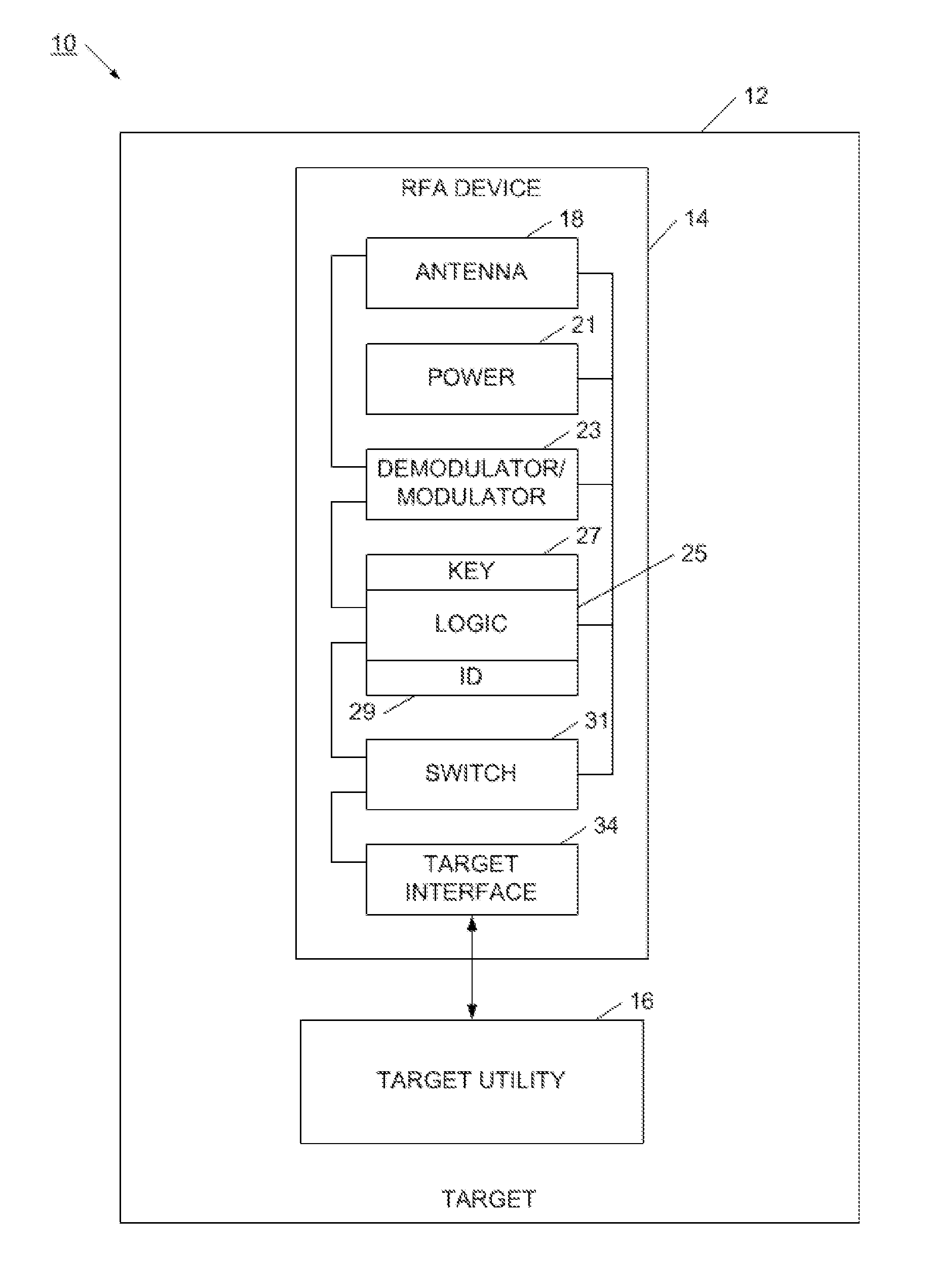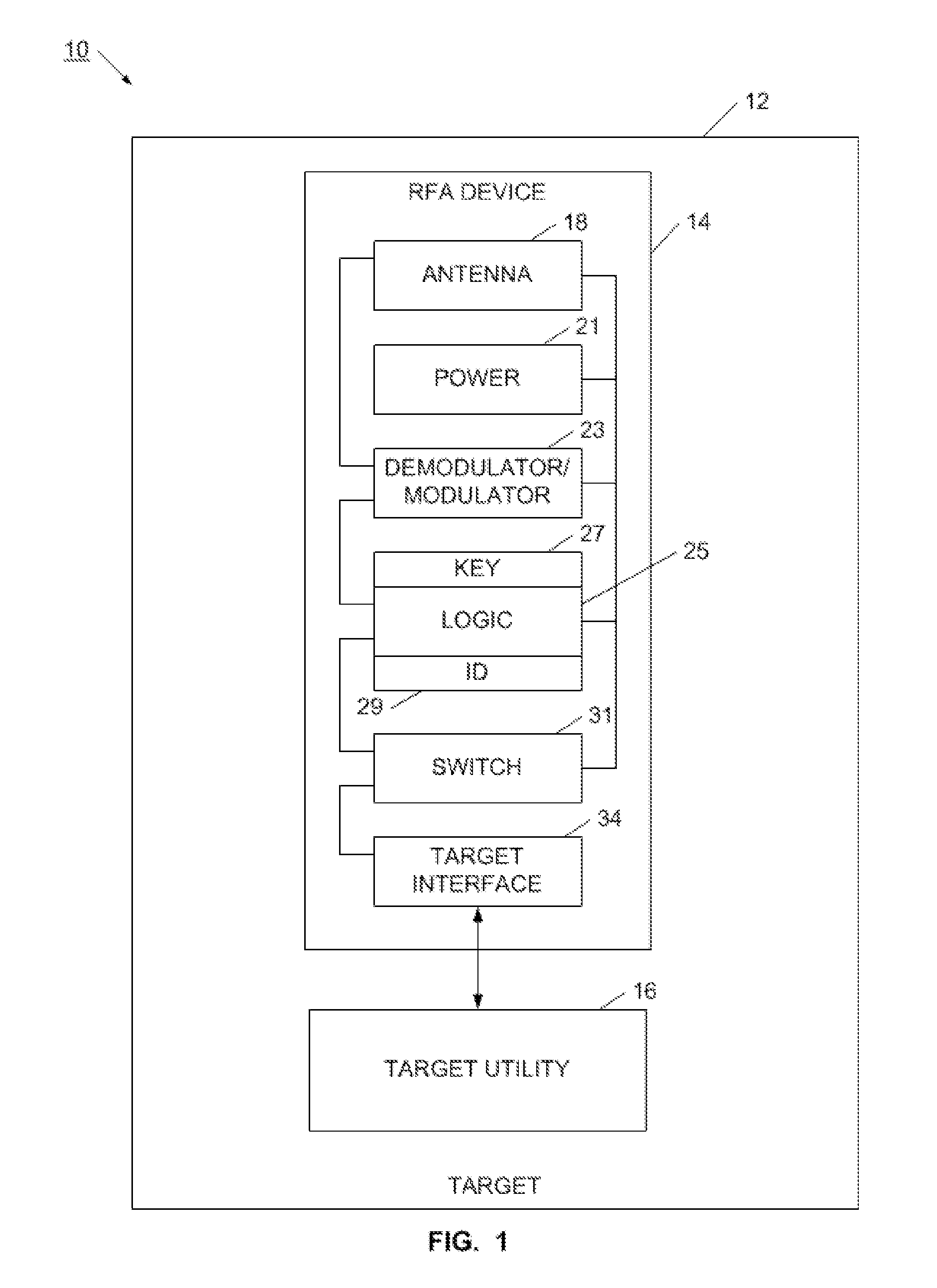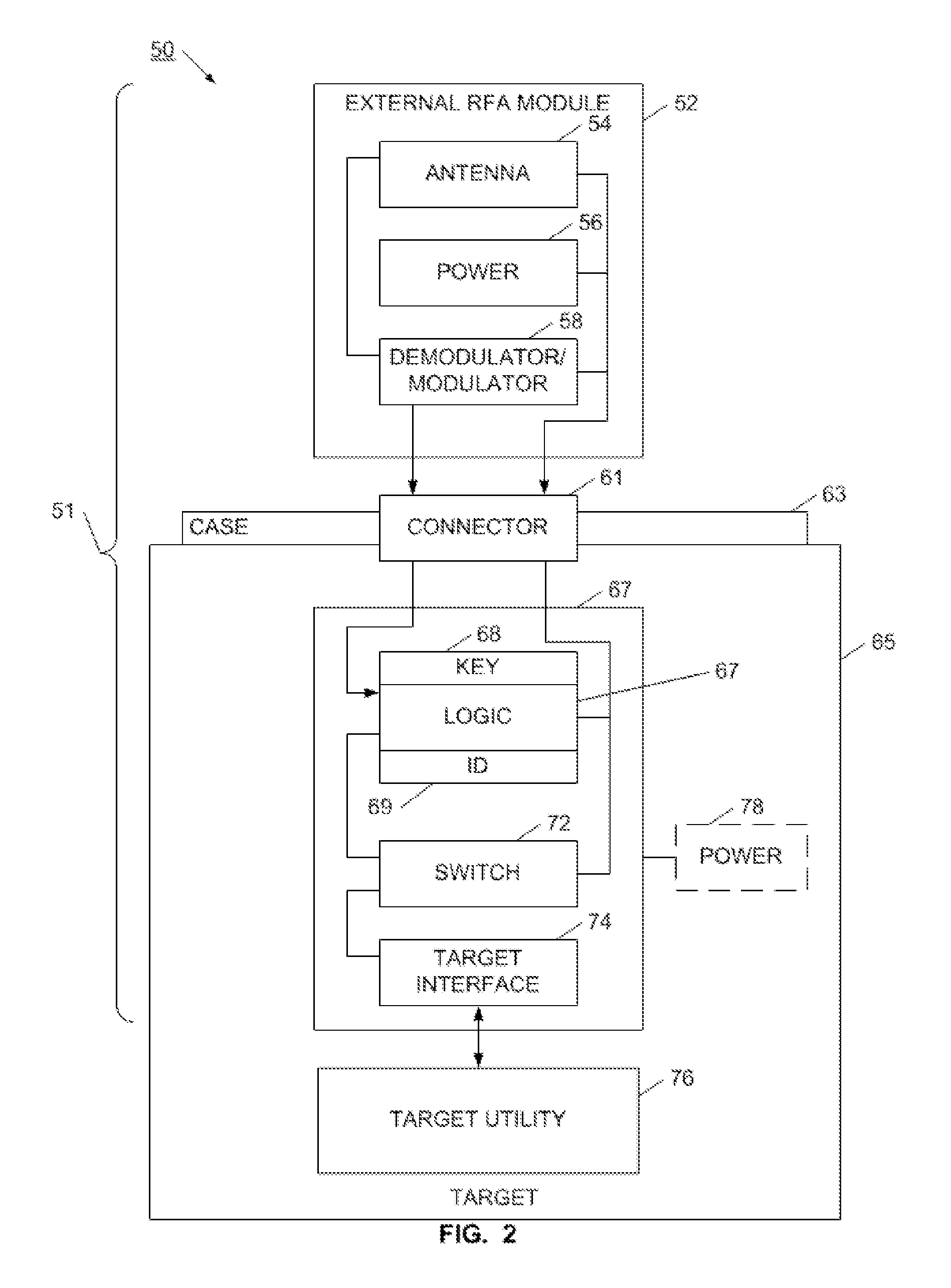Mobile Device for Selectively Activating a Target and Method of Using Same
a mobile device and target technology, applied in the field of mobile devices for selective activation of targets and methods of using same, can solve the problems of not being able to account for products in the middle of a pallet, products buried in a consumer's cart, slow adoption of rfid, etc., and achieve economic installation, improved rf reception, and robust rf communication.
- Summary
- Abstract
- Description
- Claims
- Application Information
AI Technical Summary
Benefits of technology
Problems solved by technology
Method used
Image
Examples
Embodiment Construction
[0046] Referring now to FIG. 1, a target device 10 is illustrated. Target device 10 includes a radio frequency activation (RFA) device 14 within the housing 12 of the target. The RFA device is used for controlling the utility of the target 10. To facilitate ease of manufacture, the RFA device 14 is provided in a package convenient for large-scale production. For example, the RFA device may be in the form of an integrated circuit package, or in the form of a surface mount device. Either way, the RFA device may be easily designed into a target's circuitry or logic, and may be readily installed on a printed circuit board or other substrate. In this way, the RFA device may be included with a target device in a cost effective manner. It will be appreciated that the RFA device may be provided in other manufacture-friendly forms.
[0047] Target 10 may be an electronic device such as a computer, TV, appliance, MP3 player, camera, game counsel, or toy. In another example, the target may be a ...
PUM
 Login to View More
Login to View More Abstract
Description
Claims
Application Information
 Login to View More
Login to View More - R&D
- Intellectual Property
- Life Sciences
- Materials
- Tech Scout
- Unparalleled Data Quality
- Higher Quality Content
- 60% Fewer Hallucinations
Browse by: Latest US Patents, China's latest patents, Technical Efficacy Thesaurus, Application Domain, Technology Topic, Popular Technical Reports.
© 2025 PatSnap. All rights reserved.Legal|Privacy policy|Modern Slavery Act Transparency Statement|Sitemap|About US| Contact US: help@patsnap.com



